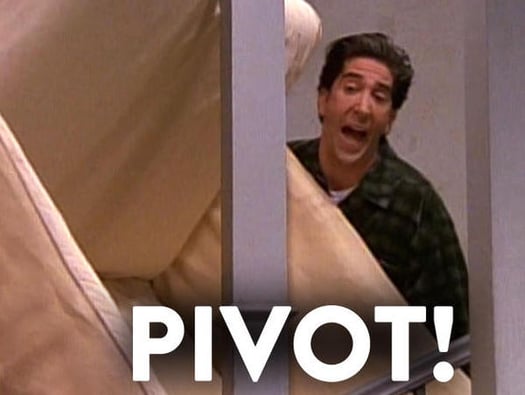Who is Involved in Strategic Planning?
If strategic planning is, as defined by John M. Bryson, author of Strategic Planning for Public and...

The same challenges that face those who make New Year’s resolutions, challenge those who create and implement a strategic plan. For example, those who aim to fit in their skinny jeans by summer but fail to do so share the same pitfalls as an organization to doesn’t reach their strategic goals. After all, a goal without a plan AND action is only a wish.
Strategic planning requires excellent communication, structure, and commitment. Those on the Strategic Planning Committee, as well as everyone within the organization must be committed to the strategic plan. If the leadership team doesn’t buy in, no one in the organization will. Executives and management must support and participate in the process, while providing resources and authority. Personally, I have seen too many times an Executive Director left alone with creating a strategic plan. In these cases, the strategic plan doesn’t take off because the board and the organization had not bought into the strategic planning initiative. It takes the team to make a strategic plan, as well as to implement it.
For many organizations, they struggle having the right people involved. It takes more than the CEO, business owner, or Executive Director. Strategic planning is successful when all levels of the organization drive the strategic planning process. This includes board members, the executive team, upper management, middle management, and front-line workers or volunteers. Far too often, I see organizations not including people from all levels of the organization. When excluding front line workers or volunteers, for example, you miss hearing about real-life pain points from your clients/customers/members/patients/volunteers.
Another challenge in strategic planning is that many organizations may practice “set it and forget it”. “Set it and forget it” means that if they put on paper their overall strategy, they are finished. This does not work. Once the overall strategy and goals are defined, all processes, initiatives, and decisions need to be aligned with the strategy. No process, initiative, or decision should be made without considering the strategic plan, which means time should be built in ALL decision making to consider the strategic plan. When decisions are made without considering the strategic plan, the strategic plan and its goals are null and void.
Poor communication is a huge challenge to strategic planning. Good communication consists of centralizing information and standardizing how the strategic plan is presented. Good strategic planning and implementation of the strategic plan requires that every individual in the organization is familiar with the strategic plan, as well as the goals and their responsibilities. The strategic plan needs to be “owned” by every person within the organization. Without understanding the strategic plan by all parties representing the organization, the plan will, inevitably, fall flat.
Another challenge to strategic planning is not knowing the data associated with your organization. Without having conclusive data, you just have guess work. For example, I worked with an organization who didn’t centralize all their data, so when I asked them what their most profitable service was, they made an “educated guess”. However, when I studied their data, I uncovered that the service that they thought was the least profitable was the most profitable. This information changed everything. It is imperative to have data centralized and accurate!
Getting “stuck in the weeds” is another challenge to strategic planning. Strategic planning is not about discussing the day-to-day. It is about the big picture. All too often, a strategic planning meeting will derail once day to day problems are discussed. The strategic planning process should not be spent debating operations details but rather discussing how operations relates to the overall strategy. This is not the time to discuss the issues you are having with one employee or one vendor.

A strategic plan is a living and breathing document. As your organization and the market evolves, your plan should evolve as well. The strategic plan should allow room for pivoting. If COVID has taught us one thing, it has taught us to be ready to pivot!
Don’t get hung up on what was. The strategic plan is about focusing on the future.

Strategic planning is often more successful when you hire a strategic planning consultant. Working with a strategic consultant can alleviate many of the challenges we have enumerated today.
A strategic planning consultant may cost you money, but don’t forget that time is money. A strategic planning consultant has a methodology and process and can guide you the strategic planning process efficiently, thereby saving you time and internal resources.
They provide you an outside perspective, as they are not wrapped up with emotion or the internal politics of your organization. With objectivity comes solutions that you may not have seen otherwise.
Strategic planning consultants bring specialized skills, some of them being understanding risks and mitigation practices. They can bring stability and calm during chaotic and difficult conversations.
Strategic planning consultants bring a variety of resources to help you with your current situation. They have worked with a multitude of organizations and have encountered a variety of challenges, and many have acquired a variety of resource partners that they can bring in to help with issues you may be facing.
Picasso said, “Our goals can only be reached through the vehicle of a plan. There is no other route to success.” MPWRSource believes this wholeheartedly, and we would love the opportunity to help you through the process.

If strategic planning is, as defined by John M. Bryson, author of Strategic Planning for Public and...

We’re constantly told the latest cloud technologies and software contain the secret sauce that will...